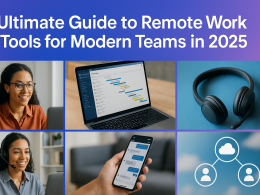Are you struggling to explain resume gaps during your job search? You’re not alone. Many job seekers face this challenge, whether it’s due to a career change, personal reasons or unexpected circumstances. However, having gaps in your employment history doesn’t necessarily mean the end of the road for your career aspirations. In fact, there are various ways to bridge these gaps and present yourself as a competitive candidate to potential employers. In this blog post, we’ll explore some effective strategies for addressing resume gaps and positioning yourself for success in your job search journey!
Why Resume Gaps Matter
Resume gaps are periods of time where you were not employed or working in your industry. Whether the gap was due to personal reasons, taking a break from work or pursuing further education, it may raise questions for potential employers when reviewing your application.
Resume gaps matter because they can leave a negative impression on recruiters and hiring managers who are looking for consistent employment history. They may assume that you lack commitment or skills relevant to the job. Moreover, if multiple candidates have similar qualifications and experience but one has an unexplained gap in their resume, it’s likely that they will be eliminated as a candidate.
It’s essential to understand how different types of resume gaps can affect your chances of getting hired. For example, career breaks due to illness or family commitments may be viewed more favorably than extended unemployment without explanation. Similarly, pursuing further education or training could demonstrate dedication and upskilling towards your career path.
In any case, being transparent about the reason behind your resume gap is crucial during the recruitment process. It shows honesty and accountability while also allowing potential employers to assess whether you would be suitable for their organization based on their values and expectations.
How to Address Resume Gaps
Addressing resume gaps can be a daunting task, but it’s essential to do so in order to land that dream job. The first step is to determine the reason for the gap and how it fits into your overall career path. If you took time off for personal reasons such as travel or family obligations, consider highlighting any relevant skills or experiences gained during that time.
If the gap is due to unemployment, don’t be afraid to explain the circumstances surrounding your departure from your previous job. Emphasize any volunteer work or freelance projects you may have taken on during this period.
Another option could be taking online courses or attending workshops related to your field of interest while unemployed. This not only shows initiative but also a willingness to learn and grow professionally despite challenging circumstances.
It’s important to address resume gaps proactively rather than waiting for potential employers to bring them up during an interview. Be honest about what happened and showcase how you’ve used that time productively towards developing new skills and gaining valuable experience.
Addressing resume gaps requires honesty, self-awareness, and creativity in showcasing how those periods of time were utilized effectively towards achieving career goals.
Tips for Writing a Resume that Fits Your Career Path
When it comes to writing a resume that fits your career path, there are a few things you need to keep in mind. First and foremost, make sure your resume is tailored to the specific job you’re applying for. This means highlighting relevant skills and experiences that align with the job description.
Start by doing some research on the company and position you’re interested in. Look at their website, social media channels, and even reach out to current or former employees for insight. Use this information to customize your resume accordingly.
Another tip is to focus on achievements rather than just listing duties. Employers want to see concrete examples of how you’ve made an impact in previous roles. Quantify your accomplishments using numbers or percentages whenever possible.
Don’t forget about keywords! Many companies use applicant tracking systems (ATS) that scan resumes for certain keywords before they even land in front of a human recruiter. Make sure you include relevant industry terms and phrases throughout your resume.
Don’t be afraid to get creative with formatting – but don’t go overboard either. A well-designed resume can help grab employers’ attention while also showcasing your design skills if applicable. Just remember that readability should always come first – avoid using overly complex layouts or fonts that are difficult to read on screen or paper.
By keeping these tips in mind as you write your resume, you’ll increase the chances of landing an interview and ultimately getting hired for the job of your dreams!
How to Respond to Interview Questions
Interviews can be nerve-wracking, especially when you have gaps in your resume to address. But don’t worry – with preparation and practice, you can confidently respond to any interview question.
Firstly, research the company and its culture before the interview. This will help you tailor your responses to align with their values and goals. Also, review common interview questions related to employment gaps and think of specific examples that demonstrate how you stayed productive during those times.
When asked about resume gaps, be honest but positive in your response. Explain why there was a gap (e.g., caring for a family member or pursuing further education), then highlight any skills or experiences gained during that time that could benefit the company.
Additionally, emphasize your passion for personal growth and career development by discussing any courses taken or volunteer work done during the gap period. This shows initiative and a willingness to learn outside of traditional work settings.
Remember to maintain eye contact and speak clearly throughout the interview. Practice active listening by asking follow-up questions or clarifying information provided by the interviewer.
By following these tips, you’ll impress potential employers with your professionalism and ability to effectively address resume gaps in an interview setting!
Conclusion
In today’s job market, resume gaps are becoming more and more common. Whether it’s due to personal reasons or unexpected circumstances, it can be challenging to address them in your job search. However, with the right strategies and mindset, you can bridge the gap and land your dream job.
Firstly, it’s essential to understand why resume gaps matter. They may raise red flags for potential employers who will want clarification on what happened during those periods of time when you weren’t working. To avoid this situation from happening, follow our tips on how to address resume gaps properly.
One of the most effective ways is by being honest about why there was a gap in employment while emphasizing what you learned from that experience. Also, make sure your resume emphasizes relevant skills rather than just work experience.
Additionally, tailor your cover letter and interview responses specifically to address any potential questions regarding resume gaps proactively.
By following these tips for writing a resume that fits your career path and knowing how to respond confidently during interviews despite any previous discomforts or uncertainties about past experiences – there’s no doubt that bridging the gap will become much easier over time!
Remember not only do these methods help explain some of life’s unexpected turns but they also highlight unique qualities such as resilience which can make candidates stand out even further! Remember always be confident in yourself and don’t shy away from anything that makes you who you are – including those tiny gaps along the way!









